What Sensors Are Essential for Lithium Battery Wrapping Machine

What Sensors Are Essential for Lithium Battery Wrapping Machine
Why do lithium batteries need to be wrapped?In order to protect the lithium batteries from surface scratch or leakage during the process of shipment and assembling, normally an insulating film with one-sided adhesion will be wrapped around the surface of the battery,which is waterproof and dust-proof to protect the batteries better.
Currently, many domestic battery manufacturers are still rely on manual or less automated way to wrap lithium batteries. Most of them just take simple wrapping operations, neither comprehensive cleaning of the battery housings before wrapping, nor accurate testing on the wrapping performance. All these leaves the batteries safety hazards,and also causes inefficiency and high cost.
However, as there is increasingly market demand to guarantee battery safety and maintain product consistency, the automatic wrapping machine comes into being. Not only this machine can fulfill the deep cleaning task on battery surfaces,but finish good wrapping as well as detection.
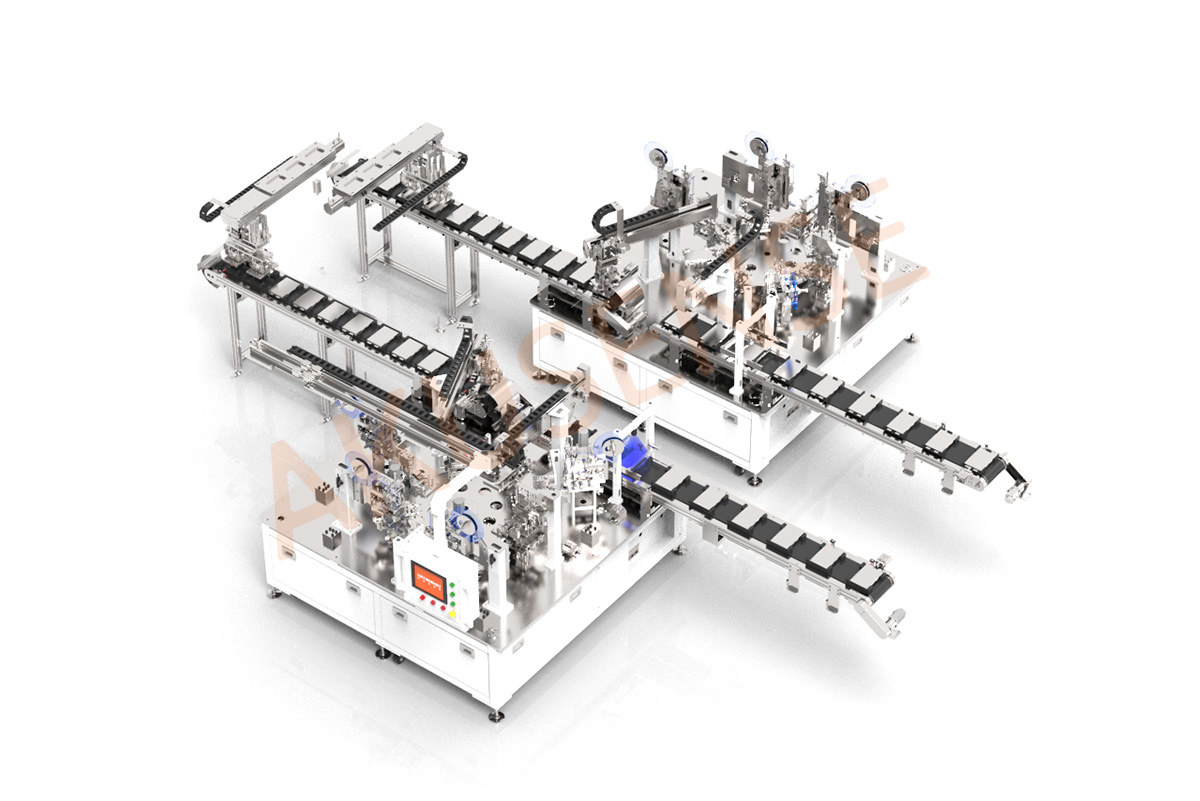
Akusense is also developing solutions for the demand of users in this market at the same time. Today,we will share the application cases of sensors on automatic lithium battery wrapping machine.
As there are many reflective surfaces on the equipment,ambient light also has an impact on it. Additionally, packaging film is a reflective material. Therefore, BGS phtotelectric sensors is majorly applied in these cases to solve the above problems. Some workstations are inevitably equipped with strong fluorescent lamps, ESB-V30 fits this application well. It is an another BGS photoelectric sensor of Akusense, which can suppress visible light effectively due to its infrared light source.
① Fetch Materials by Robot Arms
The loading and unloading of materials is carried out by the gripper of the robot arms, where sensors are required to sense the batteries to trigger the next action,and the gripper cylinders are used to grasp the batteries and transport them to the next work station.ESB-30N is a BGS diffuse reflection photoelectric sensor that can detect the materials without being affected colors.
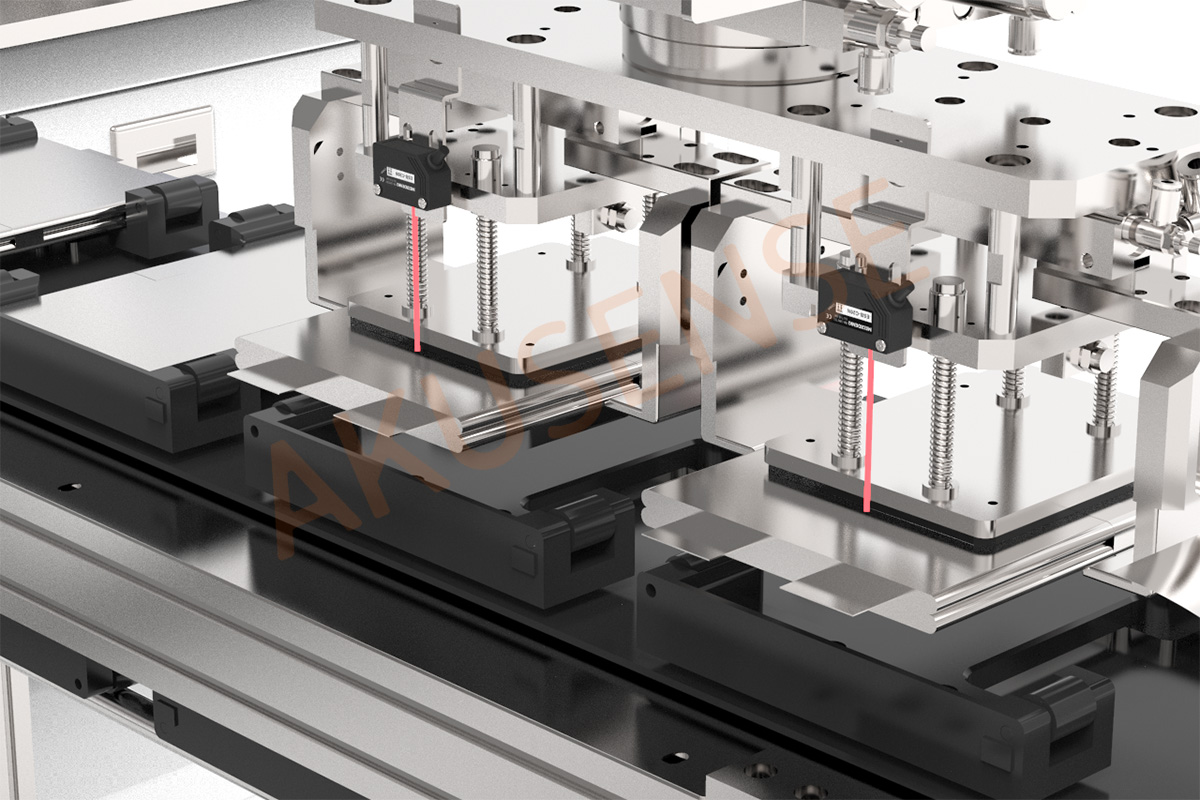
② Loading belt
During the process of conveying materials on the belt,it needs transmission after the sensors detected the materials, to confirm whether they are in place or not. As the work stations on the belt are strongly illuminated,it would be more viable to apply ESB-V30N,the infrared BGS diffuse reflection photoelectric sensor with strong anti-interference function,which effectively improves the sensing accuracy.We can adjust the sensitivity according to specific application requirements, for there is 6-turn potentiometer inside the sensor.
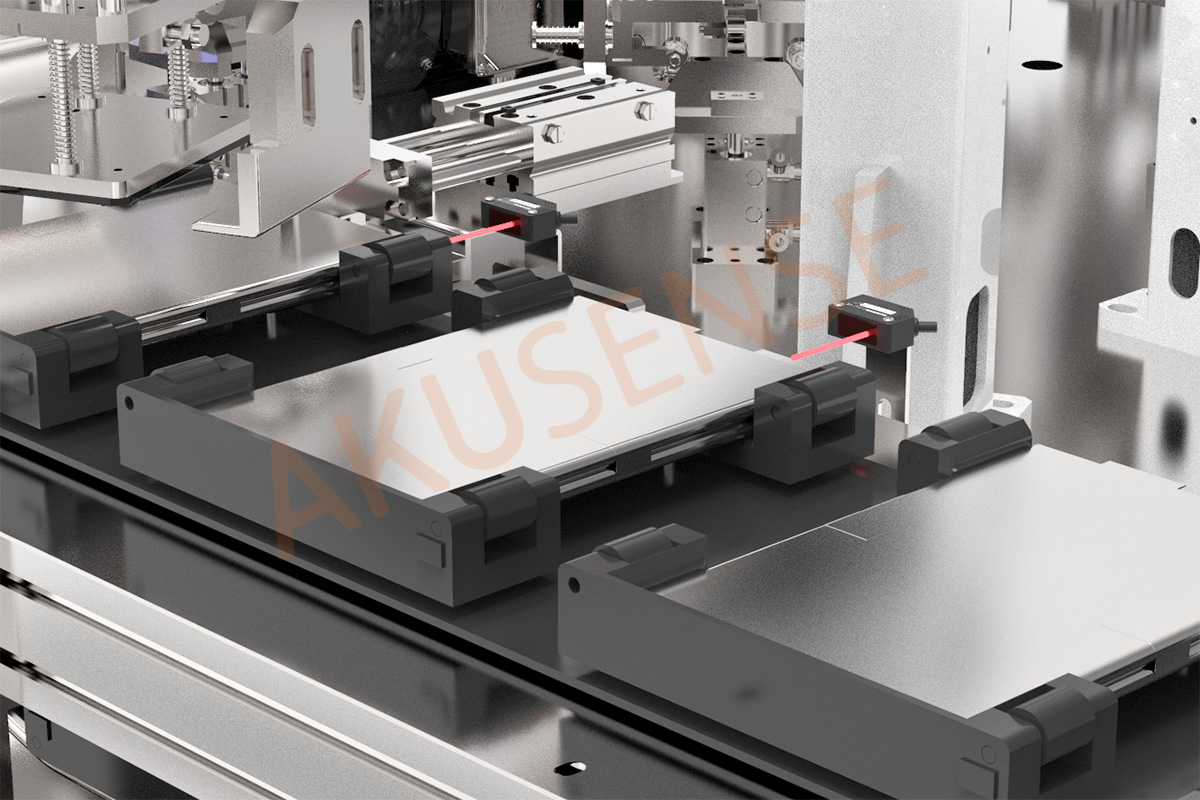
③ Turntable processing station
Each processing station on the turntable is equipped with a BGS diffuse reflection photoelectric sensor ESB-30N, which facilitates the position detection of the cell at station for wrapping. Because of not affecting by any color and superior mechanical performance, it can effectively detect the material in place or not for multiple scenes, even if the background of the work station is very complicated, it will not affect its detection accuracy.
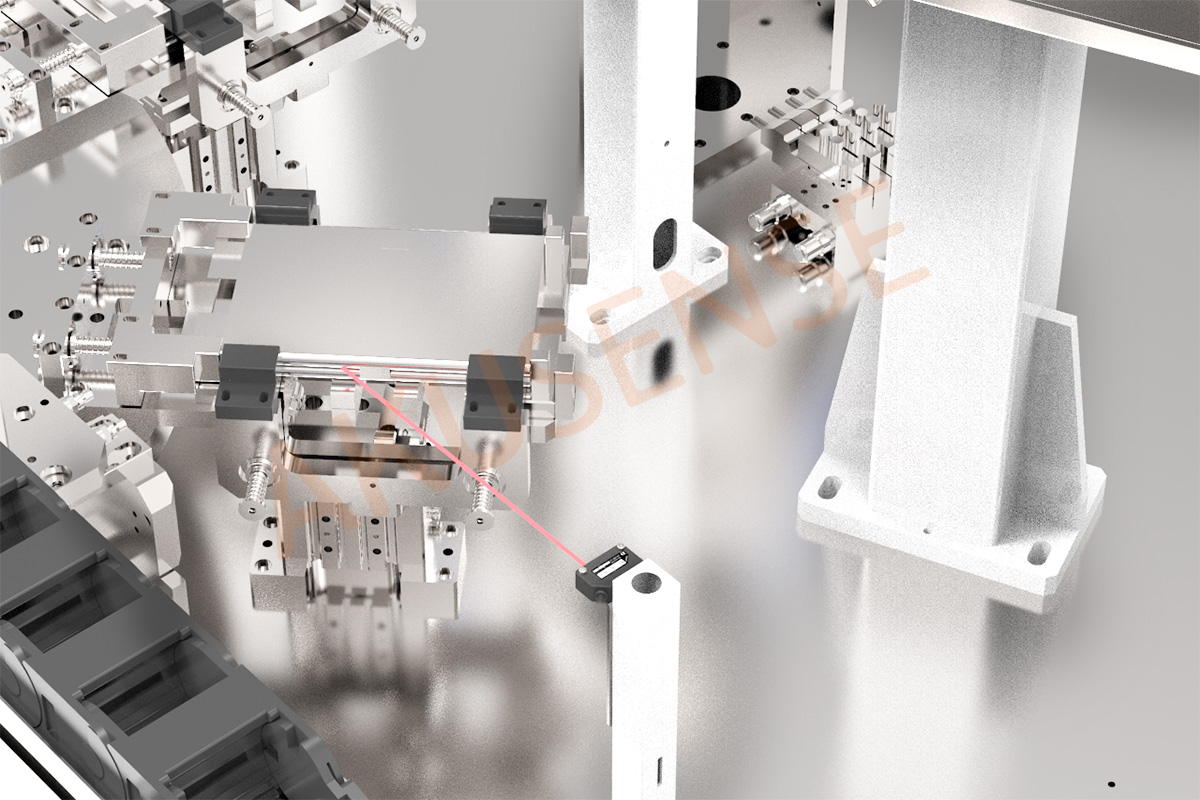
④ Wrapping Station
When the lithium battery arrives at this station, the upper cylinder compacts the film, where the ultra-high precise magnetic sensor MR-C8-U-S is installed to detect whether the cylinder is in place or not,then gives a signal to retract the cylinder for the next operation. The ultra-high sensitivity and high-speed response (5 microseconds) greatly improve the working efficiency of the machine.
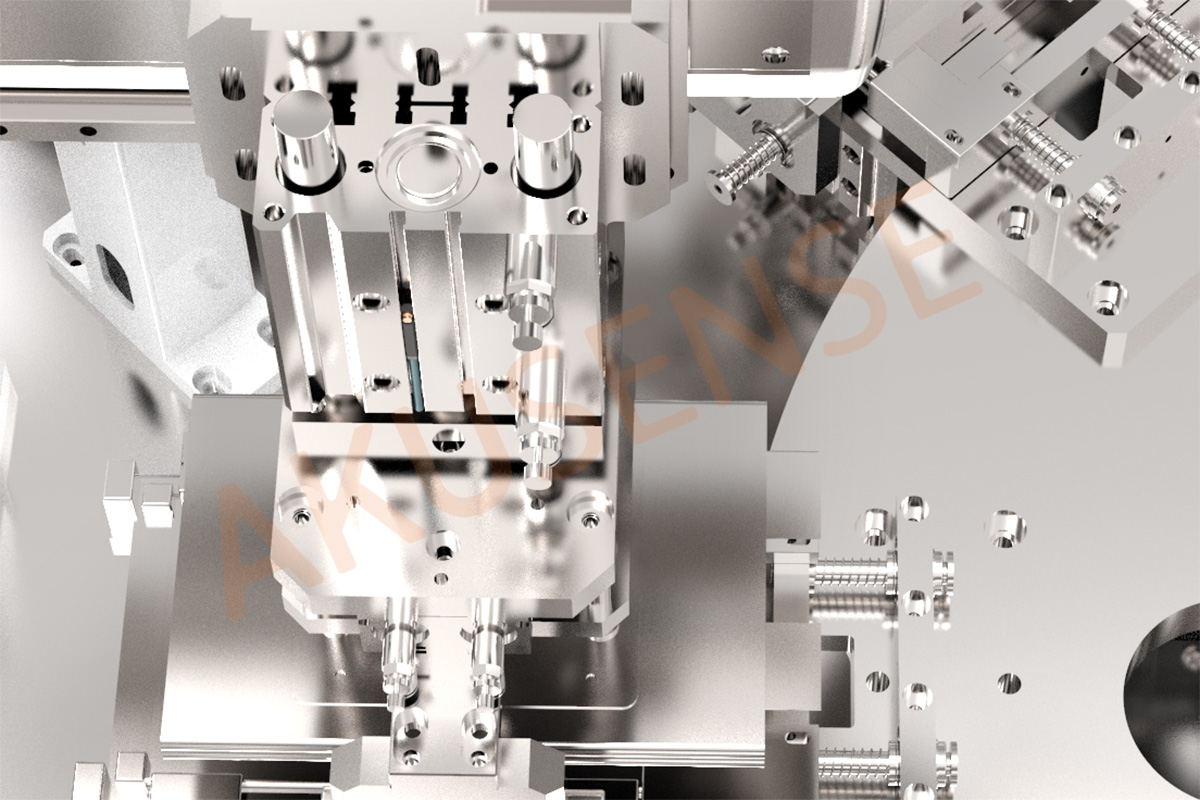
⑤ Tape Residue Detection
Normally,we take PG1,the fiber amplifier with PD-32,the optic fiber to detect the tapes. When the tape runs out, an alarm signal is given to remind the operator to replenish the tape material,so as to avoid defective products at following stations due to the short of materials.
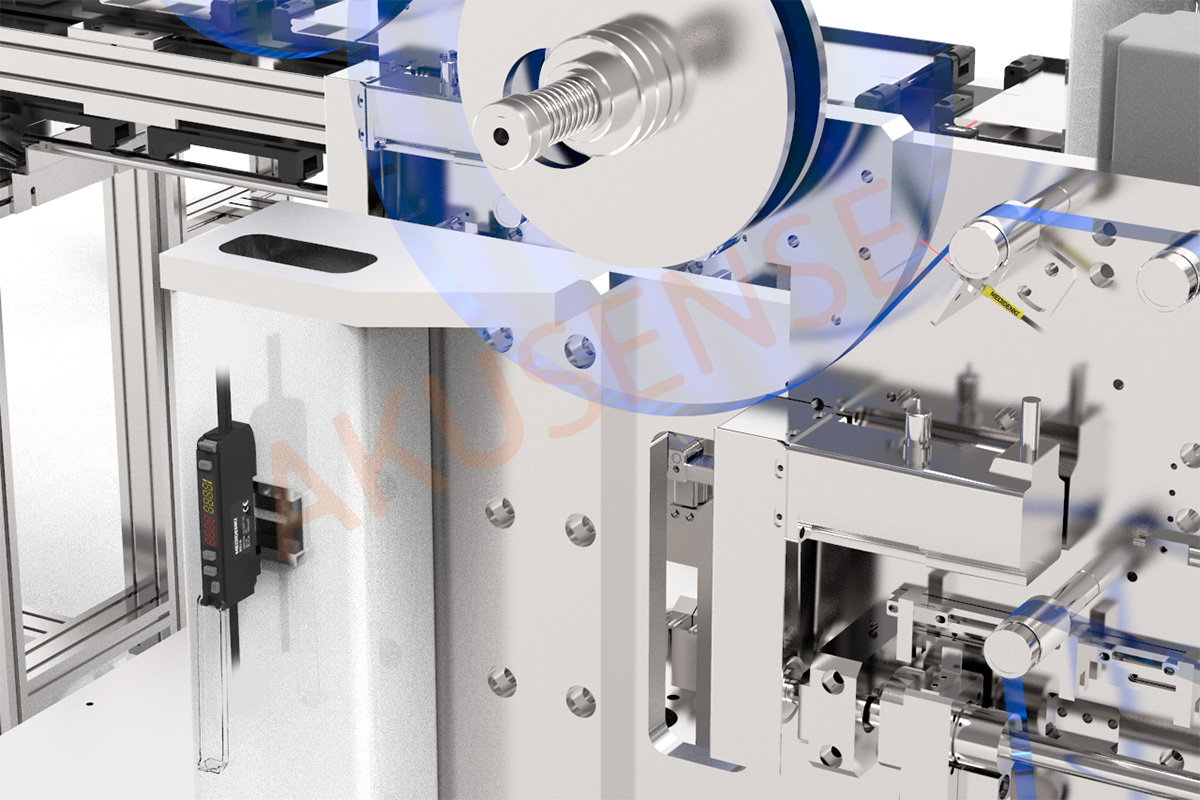
⑥ Detection for Unloading and Defects
It is a key step to take camera detection to inspect the wrap quality. At this station, the camera needs to detect defects of wrapping. When the diffuse reflection photoelectric sensor ESB-V30N at the bottom of the machine detects the finished wrap cell in place on the material tray, it immediately triggers the camera to take pictures for comparison, which records and picks out the products with defects such as wrinkles, bubbles, scratches and other bad conditions or the wrap does not meet the requirements.
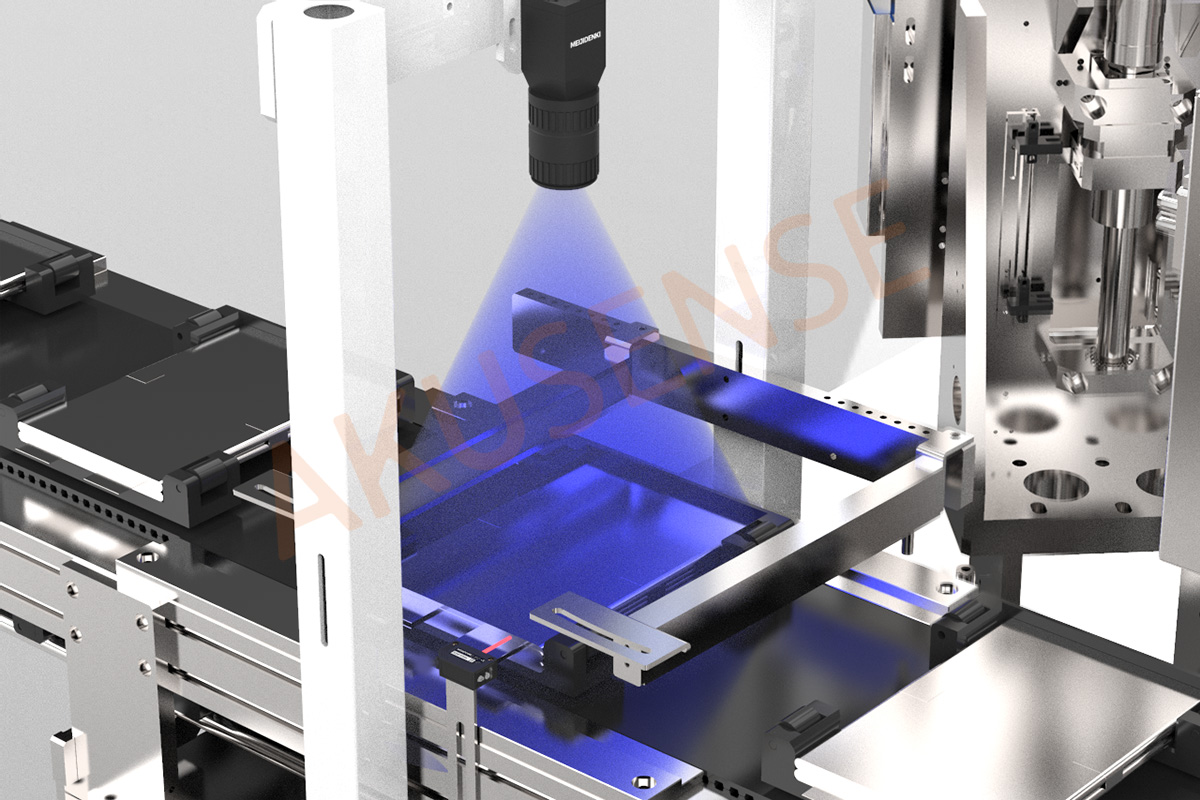
⑦ Position Limits of Mechanism Module
Slot sensors are used almost everywhere as the "joints" for detecting such movement of mechanisms as the movement limits of clamping jaws. In terms of the design, there are totally 12 types of housing in Akusense, such as F, T, R, L, K, Y, U, etc. In this application, ST-303N-E of T type is chosen according to the mechanism structure, with a slot depth of 8.5mm, which can perfectly prevent the hardware damage caused by the object hitting the bottom of the slot. Regarding to its internal process,the chip-integrated design is adopted for a better performance, which makes the repeat accuracy of the sensor up to 0.001mm.
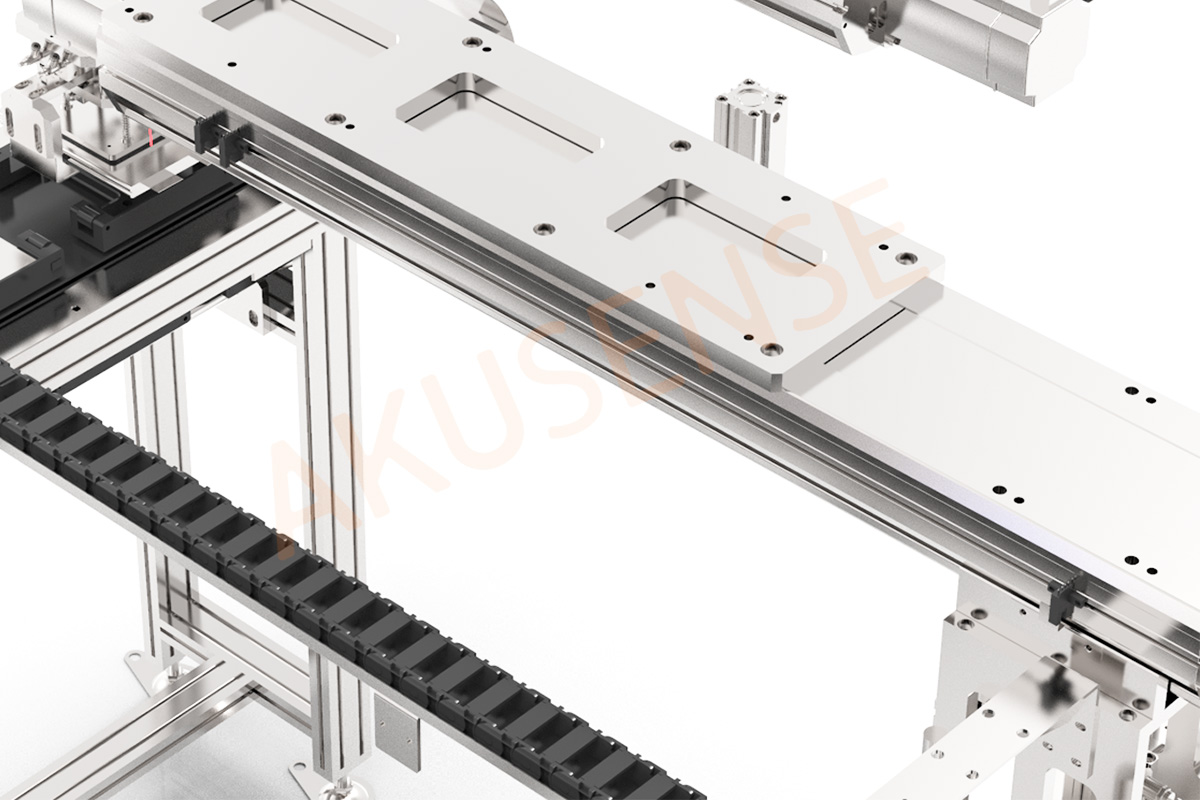
Due to the increasingly stringent requirements of battery manufacturers for the appearance after wrapping, the increase of inspection items, the improvement of the automation degree of battery enterprises and the raising of the standards of production efficiency and product consistency, the requirements for automatic wrapping equipment are also increasing. Those manufacturers who produce battery film machine pay more attention to selecting sensors. For this, Akusense will also strive for excellence, and constantly upgrade and improve lithium smart production solutions, to support lithium equipment companies to become industry leaders.

